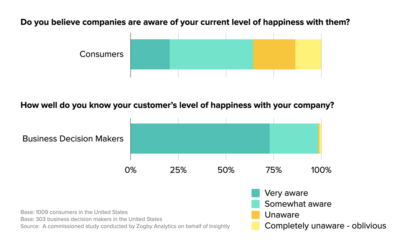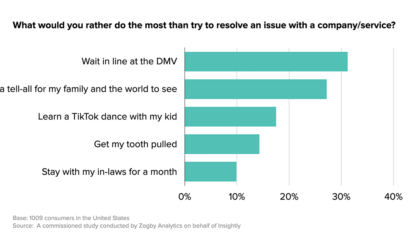No big shocker here: We’re all buying more groceries and toilet paper, shifting more purchases from in-store to online, and binge watching Tiger King.
But how is our collective shelter-in-place behavior affecting a broader swath of industries? And how can businesses both large and small best engage their customers during this time?
With data starting to trickle in about what people are actually doing during the time of COVID-19 — and what they plan to do after — I thought it would be helpful to consolidate this information so that you can make more informed and more customer-centric decisions about how to move your business forward.
I’ll continue to update this as I receive more data.
***
April 2020
April 9: Online retargeting platform Criteo analyzed data across roughly 20,000 sites and found higher demand for consumer electronics and home goods. This post breaks out its findings by country.
April 9: Market intelligence firm Numerator’s weekly survey found that a high percentage of people across low-, middle-, and high-income brackets all say that the coronavirus has impacted their shopping behavior.
April 9: Market research firm GlobalWebIndex looked at people’s behavior in 17 countries across five continents and wide array of areas. This post starts off with data around people’s concern about the coronavirus and the economy, then moves into how people are staying fit at home — and their expectations for continuing their exercise routines once the pandemic is over. It also includes data on the most used and the most trusted (not the same thing!) information sources and people’s attitudes towards advertising during the outbreak.
April 7: Consumer research software platform Suzy found that people are flexing their creativity: cooking, writing music, coloring, painting, and drawing. They’re also sharing their creative outputs and looking for creative inspiration.
April 7: Visual Capitalist created a nice graphic of a GlobalWebIndex survey of nearly 4,000 Internet users in the US and UK about their media consumption during the pandemic. Gen Zers and Millennials are watching online videos, while Gen Xers and Boomers are watching Broadcast TV.
April 6: A Newsy/Ipsos poll of 1000+ U.S. adults found that 26% plan to use sharing economy services — like ride sharing and clothing rental — less in the future than they did before the coronavirus outbreak
April 2: Consumer research software platform Suzy found that 30% of consumers want financial services companies to offer tips on investments, and 35% want tips on how to manage their money during the outbreak. Only 15% are looking for new credit cards.
April 2: Yelp’s Coronavirus Economic Impact Report gauges consumer interest in various business categories, “measured in terms of daily U.S. counts of a few of the many actions people take to connect with businesses on Yelp: viewing business pages or posting photos or reviews.” Up: fitness equipment and community-supported agriculture. Down: breweries and bridal stores.
March 2020
Google search data from March points to five key behaviors: 1) Assembling critical information: “People are looking for clear, specific information about where, how, and when to get the things they need.” 2) Discovering new connections: “Even as people physically distance themselves, they’re discovering new connections and nurturing relationships.” 3) Adjusting to changes in their routines: “Search interest for ‘do it yourself’ peaks midday on the weekend in the U.S. and Canada, but sees a slight uptick nightly around 10 p.m. or 11 p.m.” 4) Praising everyday heroes: “the notion of ‘thank essential workers’ has taken a sudden upturn in search interest worldwide.” 5) Taking care of themselves and others: “There’s also rising search interest in ‘virtual tour’ (‘visita virtual’) in Spain and ‘live zoo’ in the U.K.”
March 23, 2020: Marketing services firm LRW surveyed 44,000+ people in the US and found that “34 percent report taking surveys more often than before, likely for the benefits they provide: distraction and entertainment, the sense of control, the incentives, and/or the feeling of normalcy.” Looks like now’s a good time to get some customer input and feedback. (Note: Per the editor’s note at the bottom of this post, the headline — The Disparity Between U.S. Coasts and the Heartland — is no longer as relevant as it was on its original posting date.)
March 19: Online retargeting platform Criteo shared that fashion, luxury, and home furnishing transaction levels remain higher than those from January 2019.
***
The date of this post is the date it was last updated.
Have a data point to add to this list? Please share it in the comments below!




